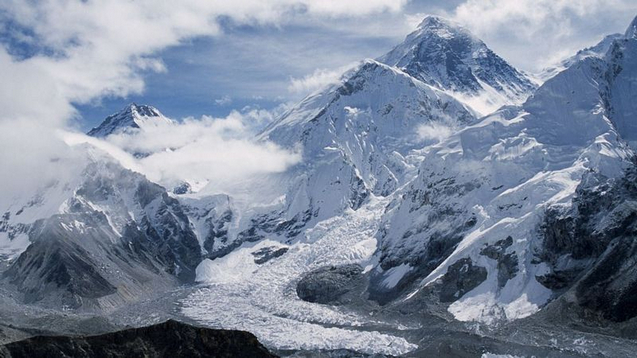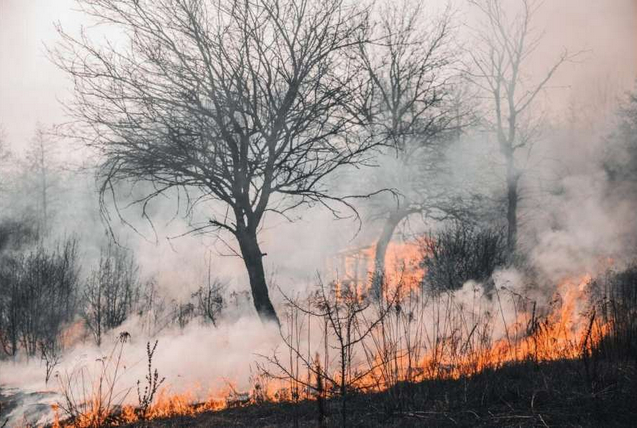
|
|
Retreating glaciers can destabilise the ground below, making them
prone to landslides. Getty Images |
The recent flash flood disaster in India's Uttarakhand state, they say, is the latest example of such a perilous knowledge gap.
The Himalayas have the largest number of glaciers on Earth outside the poles and they have lost billions of tonnes of ice due to accelerated melting caused by global warming.
"There is simply no comprehensive understanding of what actually is happening in terms of such hazards," said Professor Jeffrey Kargel, a senior geologist in the US who has researched a number of disasters in the Himalayas and who is also looking into the Uttarakhand disaster.
"We are just reactive when incidents like what happened in Uttarakhand happen. We are not monitoring the glaciers with such hazard attributes, at least not the majority of them."
Dangers of retreating glaciers
Experts say when glaciers retreat or thin out, some of them can become dangerous. For instance, in some cases, remaining ice of retreated glaciers can hang perilously on steep walls of mountains and can collapse at any time.
It is also possible that thinned or retreated glaciers can destabilise the ground below and around them which they would have otherwise buttressed. This can make the area prone to landslides, rockfall or icefall and even potentially lead to the collapse of entire mountain slopes.
Scientists say such events can also block rivers and rivulets below that eventually burst, sweeping away everything in their path - just like what seems to have happened in Uttarakhand recently, according to preliminary findings.
But they say they don't know where exactly such glacier-related dangers are lurking and which human settlements and infrastructure downstream are under threat.

|
|
Most studies on Himalayan glaciers have focused on their retreat
and glacial lakes. Getty Images
|
"There are more than 50,000 glaciers in the Himalayas and the Hindu Kush region and only 30 of them are being closely observed, including field studies," said Muhammad Farooq Azam, a glaciologist with the Indian Institute of Technology, Indore.
"Only around 15 of those studies have been published. We need to be observing our glaciers more closely, particularly because so many factors are at play."
Earthquakes and climate
Scientists say as the youngest mountain ranges in the world, the Himalayas are still growing and earthquakes often destabilise their slopes.
Changing snowfall and rainfall patterns in the wake of climate change make the mountains more vulnerable, they add.
And the warming-related changes in the glaciers make things worse, they warn.
A glacier in Tibet's Aru mountain suddenly collapsed in 2016 causing massive ice avalanche that killed nine people and hundreds of livestock.

|
|
Earthquakes also destabilise mountain slopes in the Himalayas.
Getty Images
|
Experts say an avalanche of ice and rock from the Siachen glacier in Kashmir in 2012 killed nearly 140 people, most of them Pakistani soldiers.
'Less glaciers, more landslides'
A recent study of some high mountains of Asia - including the western Himalayas, the eastern part of the Pamir, Karakoram and south of the Hindu Kush mountain range - linked the number of larger landslides and their increased frequency between 1999 and 2018 to the retreat of glaciers.
Scientists with the Chinese Academy of Sciences, who conducted the study with the help of satellite images from the United States Geological Survey, identified 127 such landslides that had happened between 2009-2018.
"Our results show a shift in the frequency-area distribution that indicates an increasing trend of large landslides over the last decade. A decline in glacier area is associated with the increase in landslide area," said the study, published in the journal Nature in January.

|
|
Hydropower dams are at increased risk because of flash floods in
the Himalayan region. Getty Images
|
"Before, for instance, those rocks on the mountain slopes were glued by glaciers. And now if there are no glaciers, those rocks are hanging and that is a potential danger."
A special report on cryosphere by the Intergovernmental Panel on Climate Change (IPCC) in 2018 said: "Glacier retreat and permafrost thaw have decreased the stability of mountain slopes and integrity of infrastructure."
Cryosphere is the part of the planet that has water in a frozen state such as mountain glaciers, continental ice sheets, snow and ice covered areas, and sea ice.
Focus on glacial lakes
Of the limited studies on Himalayan glaciers to date, most are focused on their accelerated melting and whether that will dangerously fill up glacial lakes, causing them to burst.
Some of them have also looked into what could happen to glacier-fed rivers in the region if glacial retreat accelerated with rising temperature.
But critics say glacial lakes have received all the attention while other hazards associated with fast-melting glaciers have been ignored.

|
|
A study has linked larger and frequent landslides in high mountains
of Asia to the retreat of glaciers. Getty Images
|
"That could be because disasters like avalanches and icefalls have been rare and glacier-related hazards have been episodic."
Experts with the International Centre for Integrated Mountain Development, which has been working in the Himalayan region for many years, say glacial-lake related floods have historically caused more problems in the region.
"As these floods can affect people without warning far from the glacier themselves, it makes this particular hazard very dangerous," said Miriam Jackson, programme co-ordinator with the centre's cryosphere initiative.
'Frozen glacial studies'
India's own government agencies have been criticised for not paying adequate attention to the threat.
"We had initiated a centre in 2009 to study glaciers and that was supposed to be developed into India's national institute of glaciers," said Dr DP Dobhal, a senior glaciologist who recently retired from the Wadia Institute of Himalayan Geology, an autonomous body under the Ministry of Science.
"That never happened and, as a result, studies of glaciers were significantly affected and around one dozen glaciologists that we had trained became jobless."

|
|
Very few glaciers in the Himalayas are being studied.
Getty Images
|
Its goal states it should look at "the development and adoption of new methods for assessing the health of the Himalayan ecosystem including those of glaciers and create a database of the same".
Some experts say tension between India and its neighbours like China and Pakistan, that share borders in the Himalayas, has also been a major hindrance.
"They need to come together, they need to share information on the glaciers across borders," said Anjal Prakash, who was a lead co-ordinating author for the IPCC special report on ocean and cryosphere.
"Only then we will be able to comprehensively monitor the dangers associated with retreating glaciers and can prepare ourselves to deal with disasters."
Links
- 'Hanging' glacier broke off to trigger India flood
- Did nuclear spy devices trigger Himalayan floods?
- The mystery of India’s ‘lake of skeletons’
- Water Scarcity Likely In The Himalayan Catchment If Warming Continues
- (India) Climate Change Behind Uttarakhand Glacier Burst, Experts Feel
- Into Thicker Air And Onto Thinner Ice: How Climate Change Is Affecting Mount Everest
- Human Face Of A Himalayan Climate Crisis
- Two-thirds of glacier ice in the Himalayas will be lost by 2100 if climate targets aren’t met
- A Future of Retreating Glaciers in the Himalayas
- Acceleration of ice loss across the Himalayas over the past 40 years



